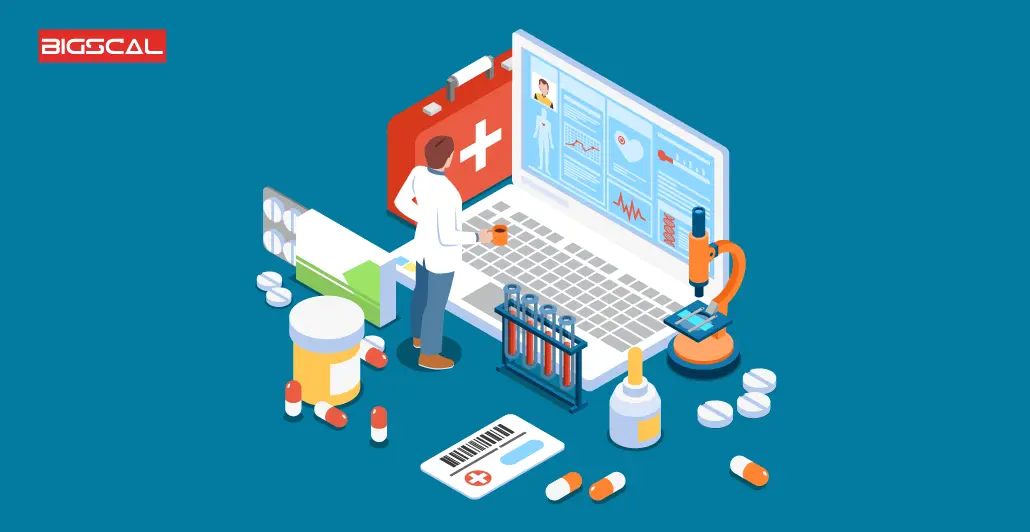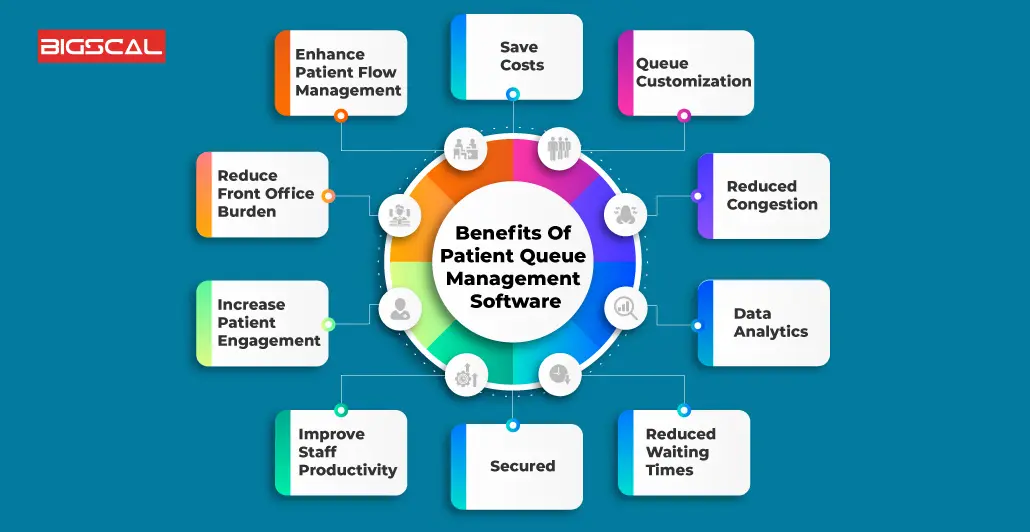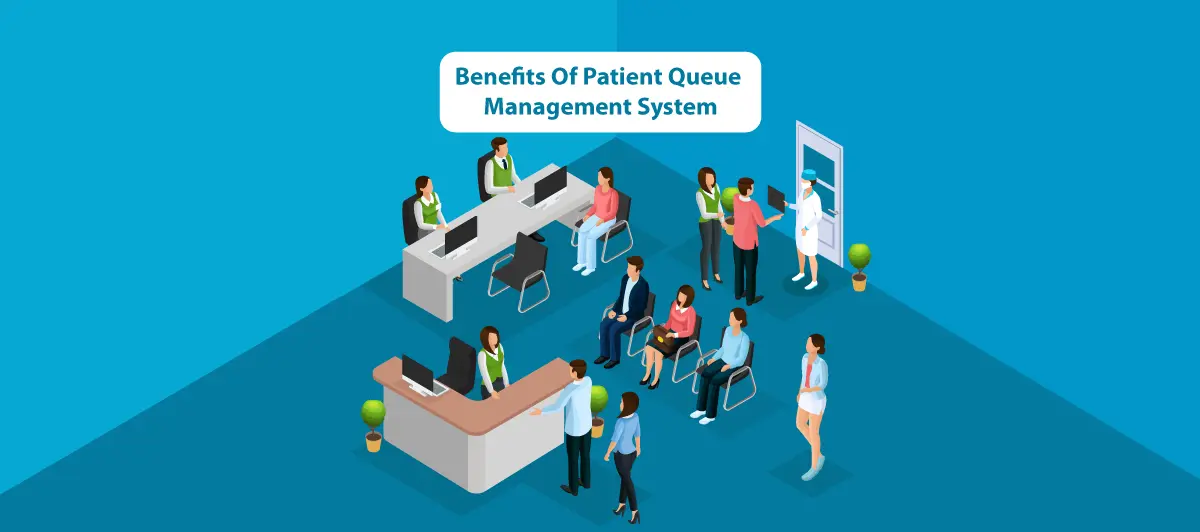Top 10 Benefits Of Patient Queue Management Software
Quick Summary: In this age of digitization, technologies are helping to complete every task effortlessly in every sector, including hospitals and clinics. One of that powerful technology or software is the Patient Queue Management System. To describe its importance in hospitals, we have concluded its top 10 benefits. Read on.
Introduction
In this fast-growing world, people need to walk. They are running to get more utilization of time. Thus, managing a facility for users efficiently is necessary, and it is also mandatory for hospitals to manage medical facilities to maintain patient flow. One of the key elements in hospitals and clinics to determine the overall waiting experience and actual waiting time for both patients and staff is the Patient Queue Management System.
A well-structured queue management system for clinics can make all facilities better and tasks efficient. PQMS are so important in handling complex medical tasks perceived waiting time. Just consider a hospital with a hospital queue management system or hospital queue system, where patients no longer need to spend hours waiting in crowded waiting rooms, unsure of when their turn will come.
A patient queue management system, a necessary tool in the fast-paced environment to enhance the efficiency of patient flow and reduce their overall expenses. Furthermore, it decreases wait times and focuses on enhancing operational efficiency. Reduces stress level among employees, increases quality of care, and accelerates the rate of patient satisfaction score.
PQMS is a system that streamlines the entire process, making it convenient and stress-free for more patients and everyone.
Let’s get all the top benefits of Patient Queue Management Systems to know their importance in healthcare organization and understand why you should even opt for it.
Read More!
Overview To Patient Queue Management Software

A Patient Queue Management System is a most used type of patient management software. It is a vital tool in healthcare facilities that helps to streamline patient flow and enhance the patient experience. Similar benefits are seen in public sector environments through the use of Queue management software for government to improve citizen service delivery. This system is designed to efficiently manage the flow of patients within a clinic or hospital. It typically consists of software and hardware components, including digital display screens, patient check-in kiosks, and administrative interfaces.
It works as a doctor Patient Flow Management system. And the primary goal of this system is to reduce patient waiting times, minimize congestion in waiting areas, and improve overall operational efficiency. Patients can check in electronically, and their information into the system. It allows staff to track their progress and whereabouts. Real-time updates on queue status are shows on screens, helping the patients waiting to stay informed about their turn.
Implementing a reliable patient queue management system software saves patient time and improves healthcare management. It increases satisfaction level, swift treatment, and enhances operational efficiency. Assigning the hospital staff among divisions and mostly, handle patient queries online. Enhances modernization and increases healthcare facilities to retain more clients and improves staff productivity.
A Patient Queue Management System not only benefits patients by reducing stress and wait times but also optimizes healthcare providers’ resources and ensures a smoother, more organized clinic environment and average wait times over time. It is a practical solution for enhancing the patient journey and improving healthcare services.
Benefits Of Patient Queue Management Software That You Must Know

So, here are the benefits of PQMS. Read this and understand why you as a doctor or hospital owner need a patient queuing system to manage patient queues in hospitals.
Enhance Patient Flow Management
A Patient queue software enhances a Patient Flow Management system. It makes sure that patients move smoothly through their treatment. The system ensures that patients are directed to the right doctors or departments in an organized manner, reducing confusion and wait times.
It not only makes the patient’s experience better but also helps the hospital run more efficiently. With this system, the staff in the waiting room can have a smartphone app to see who’s next in line, who needs immediate attention, and who can wait a bit. It’s like having a digital map for patient experience. Furthermore, this system leads to quicker diagnosis, less stress, and more time for doctors to focus on patient care.
Reduce Front Office Burden and Automate Hospital’s Tasks
Managing a hospital’s front office can be like juggling so much work at once. But a patient flow management software is like having It automates things like appointment scheduling, patient check-in, and even collecting payments. assistant who can handle many of these tasks for you.
The system automatically checks the payments, appointment patient scheduling, patient checking-in and, last but not least, payment for a number of patients. Patients can request an appointment and check in via self-service kiosks, and pay for services online. This process at the same time expedites the process with a high accuracy in data collection and data scrutiny.
It implies that both the hospital staff and management can utilize more time in rendering quality care while reducing the hours spent on administrative duties. Basically, they can floor the brackets in other departure ways and this will leave them to do what they crave for most, which is making people feel the joys of life. Their look short term, this system that will stream the front office, patient satisfaction, and the entire hospital instead of being a regular stumbling block for the entire operation.
Increase Patient Engagement and Patient Retention
Patient Queue Management system may lead to not only the time patients spend waiting in the queue to be reduced. But it enhances the patient satisfaction and engagement as well. When, for example, patients must wait for a shorter period and they can proceed with the check-in process more. It simplify, they are going to take for granted which is a positive finding. It results in the increased likelihood of the patients remaining loyal to their care team thereby seeking more of the healthcare services in the future.
The system may as well encompass communication features like SMS notifications. It deliver the messages to patients to update them about their appointment status. This is not only likely to relieve patients of creeping anxiety but also to instill a feeling of appreciation in them for the treatment they are receiving.
Not only would patients being able to give feedback and ratings contribute to the healthcare professional improving themselves but also the facility, but it is also the means for patients to get involved in their own treatment. This positive feedback system aids in the enhancement of health services and adapting health care environment to custom indidvidual needs, thus making a patient more likely to stay in a particular healthcare provider.
Improve Staff Productivity
The Queue Management System for Patients automates the clinical staff’s paperwork and computer tasks. Therefore, freeing manual workload for the health staff. It applies “Omni-channel” patient experience. It provides a high-quality, personalized and seamless experience from the time. Patient scheduling software for healthcare to check-in, navigating and patient flow, that eventually enable the staff to focus on patient care.
The system assists the reservationists in managing all their operations better. Thus, reducing the need for manual appointment scheduling and the worries about overbooking or underutilization of resources. Besides, a surplus of employees can help to deal with emergency situations in a timely manner. Thus, provide a critically needed medical treatment for those who require immediate assistance.
Staff tend to work more efficiently as wait times for patients are reduced. Satisfaction level, composed of materials such as no stress and frustration among patients, witnesses an increase. And the doctor is easier to deal with when the patient is positive and more positive to cooperation. This leads to improved treatment in general. Automating the dull jobs and also making sure the patients get a better experience is what a Healthcare Queue Management System achieves by delivering a significant boost in the worker productivity at the healthcare facilities.
Reduced Waiting Times
The feature of implementing a patient queuing system is beneficial for hospitals and clinics. It offers a problem solution where patients can’t be bored for long by waiting around a waiting room. Think of a situation when you go to the doctor; you are seated in the waiting area and do not receive your turn immediately. This is no longer the case with smartphones. You receive a text when your time is up. A system with such technology works by tracking who is next in the line hence there is no one who has to spend much time waiting.
Yet, beyond being nice to your fellow commuters; it’s even more about the fact that you are equal. Through this students and staff have a chance to socialize as well as the staff becomes more efficient. They can organize their day-to-day activities, having a knowledge of the arrival timing of the emergency patients. Obviously, the tool is not meant for patients only, but it is tailored to benefit the doctors and nurses as well.
Data Analytics
It is another benefit of queue management system software. Data analytics is like having a magnifying glass to examine how things work in a hospital. It collects information on things like patient flow, wait times, and staff performance. Then, it crunches the numbers and gives hospital managers a report card on how they’re doing. Are people waiting too long in the emergency room? Are there enough doctors on duty? You will get all the answers for your questions like this.
With this information, hospitals can make smart decisions. They can hire more staff during busy times or streamline their processes to be more efficient. It’s like having a map to find your way through a maze. Data analytics guides hospitals to better patient care and smoother operations.
Reduced Congestion
A Patient Queue Management System helps reduce congestion in waiting areas. Which makes the whole process smooth. Patients get called in at the right time, hence no more waiting. Besides, there is less crowding making it possible for people to maintain social-distance. A necessary thing, especially in health crises. The accessebility reduces congestion which in turn decreases patient’s wait time. It leaves the latter happy and the environment more efficient in general terms.
Queue Customization
This airline imagines the healthcare facilities to have queues developed in such a way to suit their own individual needs. They may provide different queues for various departments or services, hence convincing clients to introduce priority to urgent cases. So an admission can be given to a general patient’s crowd and a different queue to the emergency patients. One of the main benefits of strict adherence to guidelines, particularly when it comes to the treatment procedures, is that patients will get the care at the right time in the right sequences.
Also, the level of customizability that software offers allows for changes while working. This is when a particular section is somehow crowded, the Patient Queue Management System changes the queue system for fast treatment and eradicate unnecessary procedure.
This is akin to a one tool that can be bent and twisted to suit the different work demands in a single hospital.
Save Costs
It can be useful in a lot of instances when it comes to the area of financial saving in the context of the so-called Patient Queue Management Software in hospitals. This maximizes workforce productivity by dispensing tools and objects that achieve such ends. It has the advantage of lessening the need for overstaffing, which can help to reduce costs considerably.
Automate the manual work and administrative tasks as much as possible – now the patients can check themselves and the record-keeping can be made automatically. This in turn eliminates the requirement of doing all the manual data entry and paperwork and reduces the overall overhead cost in terms of usage of supplies and labor cost.
Lastly, the procedure shortens the duration of hospitalization while trimming the patient’s waiting times. When patients are seen and attended more promptly, this can assure against future complications and readmissions, thus, reducing the overall expense of looking after patient care.
Furthermore, this helps to reduce no appearances and to be late which are sent via automatic reminders thus ensuring that the schedules of the healthcare providers are optimized. It is the fact that it enables to cut a lot of costs that the Patient Queue Management System systems becomes such a precious resource for the healthcare organizations.
Secured
Patient data security is a top priority in healthcare. Patient Queue Management Software can enhance security in several ways. It often includes robust access control and authentication measures. Which ensures that only authorized personnel can access patient information.
It also minimizes the risk of lost or mishandled paper records, as much of the data is digitized and stored securely. Thus, this reduces the chances of data breaches due to physical record mishandling. Moreover, modern systems employ encryption and secure data transmission protocols to protect patient information from cyber threats.
These clinic queue management systems are designed to be compliant with healthcare privacy regulations. These areHIPAA in the United States, to ensure that patient data remains confidential and protected. A Patient Queue Management System strengthens security by limiting physical record access, securing digital data, and adhering to privacy regulations. It makes it a reliable and secure tool for healthcare institutions.
Develop a Patient Queue Management System With Bigscal
If you need a Patient Queue Management software or system, then approach us. BigScal can help you create a system where patients check in, get a queue number, and then efficiently manage their wait times. The system can prioritize patients based on their conditions or appointment times. It reduces waiting times and improving the overall patient experience.
BigScal’s powerful data processing capabilities enable real-time updates and analytics. This makes it easier for hospitals to allocate resources and staff efficiently.
Moreover, Bigscal can help develop a patient queue management system. It provides the necessary infrastructure to handle large volumes of patient data and optimize patient flow. It results in a more efficient and satisfactory healthcare experience.
Conclusion
So, as we discussed all the benefits of the patient queue management system, it is clear how much a queue management system for hospitals is helpful and important. If you own a hospital, then you must utilize a patient queuing system.
So, without thinking further, approach the best software company to get the best PQMS.
FAQ
What is the queue management system in hospitals?
Queue management systems in hospitals are digital systems that efficiently organize patient appointments, attendance and waiting times. It simplifies and improves patient experience, reduces overcrowding and increases patient satisfaction. Patients receive queue numbers, real-time updates and estimated wait times, improving the overall clinical experience.
What is patient management system?
Queue management systems are digital solutions used in various service industries, such as retail, healthcare, and government offices to optimize customer or visitor flows. Provides tools to queue, schedule appointments, notify individuals of about their turn, reduce waiting times and customers all improve or experience with patients.
What are the three 3 types of queuing systems?
The three primary types of queuing systems are:
- Single-Server, One-Queue: One service point serves one queuing customer.
- Multi-server, single-queue: Multi-service points serve queuing customers, and the next available server supports the next customer.
- Multi-server, multi-queue: Multi-service points have their own queue, and customers choose which queue to join, creating more options but possible imbalances in server load
How do hospital queues work?
Hospital queues follow a structured process:
- Hospital queues follow a pattern:
- Registration: Patients check in at the reception or sales office.
- Triage: A nurse assesses the patient’s condition and prioritizes care.
- Waiting area: Patients wait in a designated area, controlled by a queue management system.
- Advice: Patients see a physician or specialist according to triage.
- Patients discharged: After treatment, patients are discharged and updated in the patient queue system.
What is the queuing system in a hospital?
A hospital queuing system is a digital solution that manages patient flow and appointments efficiently. It assigns queue numbers or appointments, provides real-time updates on wait times, and ensures patients are seen by the appropriate healthcare professionals. This system optimizes the hospital’s operations and enhances the patient experience.





